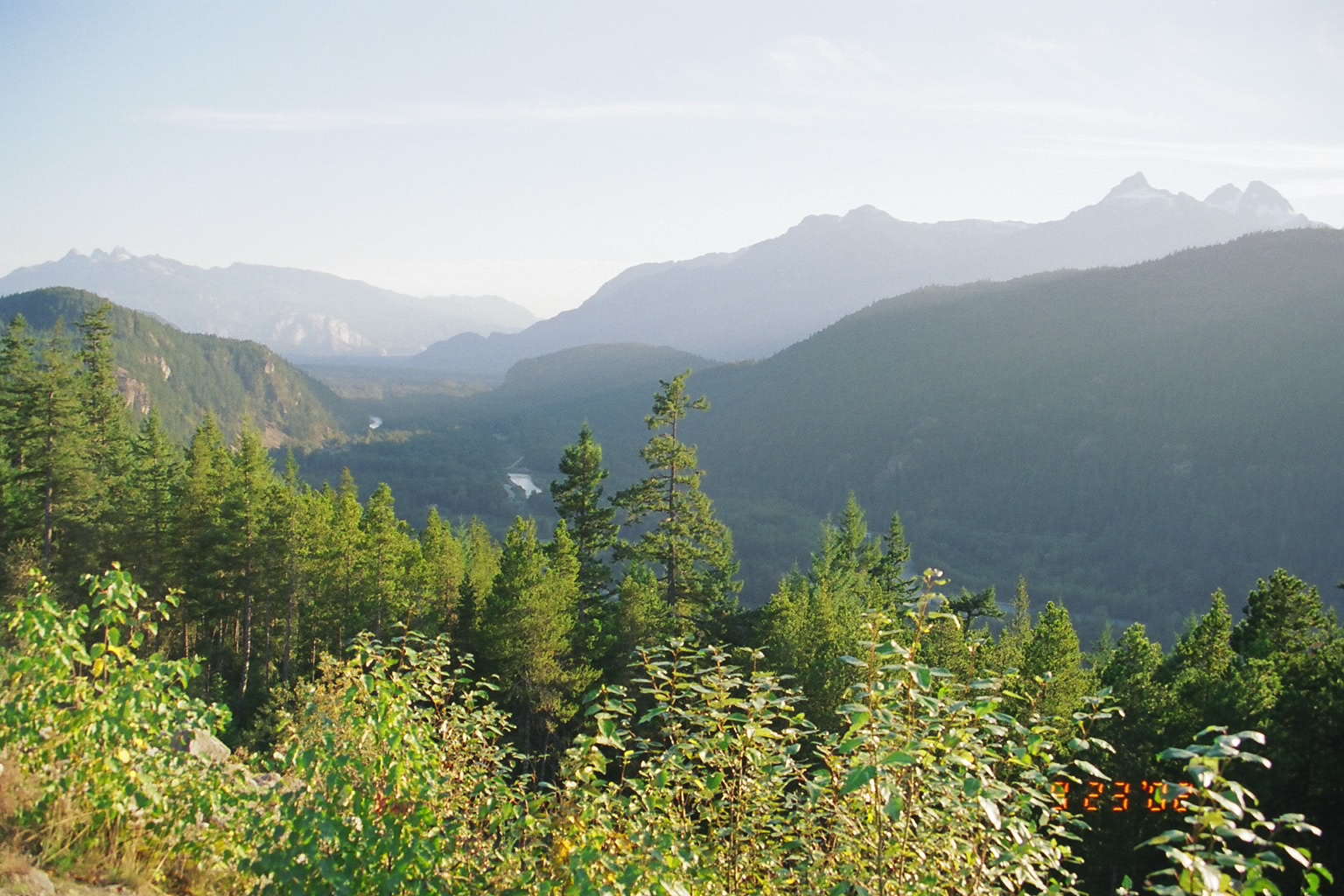|
Mount Chief Pascall
Mount Chief Pascall is a mountain summit located in the Joffre Group of the Lillooet Ranges, in southwestern British Columbia, Canada. It is situated east of Pemberton, southwest of Duffy Lake, and within Nlháxten/Cerise Creek Conservancy. Cayoosh Pass lies immediately northwest of the mountain, with Cayoosh Mountain on the opposite side of the pass. Its nearest higher peak is Joffre Peak, to the south, and Mount Rohr rises to the northeast. Precipitation runoff from the peak drains into tributaries of Cayoosh Creek. The mountain's name was submitted by Karl Ricker of the Alpine Club of Canada to honor Chief Bill Pascall, an early leader of the Lillooet Band. The toponym was officially adopted on January 23, 1979, by the Geographical Names Board of Canada. Climate Based on the Köppen climate classification, Mount Chief Pascall is located in a subarctic climate zone of western North America. Most weather fronts originate in the Pacific Ocean, and travel east toward th ... [...More Info...] [...Related Items...] OR: [Wikipedia] [Google] [Baidu] |
List Of Mountains Of British Columbia ...
List of mountains of British Columbia is a list of mountains in the Canadian province of British Columbia. List of mountains See also * Geography of British Columbia * List of mountains of Canada * Mountain peaks of Canada * List of mountain peaks of North America *List of mountain peaks of the Rocky Mountains Notes {{reflist British Columbia Mountains A mountain is an elevated portion of the Earth's crust, generally with steep sides that show significant exposed bedrock. Although definitions vary, a mountain may differ from a plateau in having a limited summit area, and is usually higher ... [...More Info...] [...Related Items...] OR: [Wikipedia] [Google] [Baidu] |
Geographical Names Board Of Canada
The Geographical Names Board of Canada (GNBC) is a national committee with a secretariat in Natural Resources Canada, part of the Government of Canada, which authorizes the names used and name changes on official federal government maps of Canada. History It was created in December 1897, by Order in Council, as the Geographic Board of Canada. It consisted of one Board member from each of four Government of Canada departments, as well as the Surveyor General of Dominion Lands, while a secretariat was provided by the then-extant Department of the Interior. In December 1899, the Order in Council was amended to give the Canadian provinces and territories the right to nominate one official, each, to be a Board member. The board was succeeded by the Canadian Board on Geographic Names in 1948, then reorganized as the Canadian Permanent Committee on Geographic Names (CPCGN) in 1961. Structure , the Board consists of 27 members, one from each of the provinces and territories, and ot ... [...More Info...] [...Related Items...] OR: [Wikipedia] [Google] [Baidu] |
Geology Of British Columbia
The geology of British Columbia is a function of its location on the leading edge of the North American continent. The mountainous physiography and the diversity of the different types and ages of rock hint at the complex geology, which is still undergoing revision despite a century of exploration and mapping. The province's most prominent geological features are its mountain ranges, including the North American Cordillera which stretches from Southern Mexico to Alaska. Terrane theory Terrane theory was first proposed by Jim Monger of the Geological Survey of Canada and Charlie Rouse in 1971 as an explanation for a set of fusulinid fossils that were found in central British Columbia. Rather than suggest that facies changes or seaways were behind this (which were common explanations at the time), the two geologists proposed that the fossils in question had been part of an assemblage of rocks that had migrated across the Pacific Ocean to their present location. This theor ... [...More Info...] [...Related Items...] OR: [Wikipedia] [Google] [Baidu] |
Geography Of British Columbia
British Columbia is the westernmost province of Canada, bordered by the Pacific Ocean. With an area of it is Canada's third-largest province. The province is almost four times the size of the United Kingdom and larger than every United States state except Alaska. It is bounded on the northwest by the U.S. state of Alaska, directly north by Yukon and the Northwest Territories, on the east by Alberta, and on the south by the U.S. states of Washington, Idaho, and Montana. Formerly part of the British Empire, the southern border of British Columbia was established by the 1846 Oregon Treaty. The province is dominated by mountain ranges, among them the Canadian Rockies but dominantly the Coast Mountains, Cassiar Mountains, and the Columbia Mountains. Most of the population is concentrated on the Pacific coast, notably in the area of Vancouver, located on the southwestern tip of the mainland, which is known as the Lower Mainland. It is the most mountainous province of Canada. St ... [...More Info...] [...Related Items...] OR: [Wikipedia] [Google] [Baidu] |
Slalok Mountain
Slalok Mountain, originally known as Rex's Pillar, is a mountain summit located in the Coast Mountains, in Joffre Lakes Provincial Park, in southwestern British Columbia, Canada. It is the third-highest point of the Joffre Group, which is a subset of the Lillooet Ranges. It is situated east of Pemberton, and northeast of Lillooet Lake. It is northeast of Duffey Peak and the nearest higher peak is Mount Matier, to the east. Precipitation runoff from the peak drains into Joffre Creek and Twin One Creek, both tributaries of the Lillooet River. The first ascent of the mountain was made in 1963 by C. Adam, T. Anderson, and G. Richardson. The mountain's name ''Slalok'' is the traditional name for the settlement of nearby Mount Currie. The name was officially adopted on June 11, 1979, by the Geographical Names Board of Canada. The mountain and its climate supports the Matier Glacier, Stonecrop Glacier, and Tszil Glacier on the northern slopes. Climate Based on the Köppen clim ... [...More Info...] [...Related Items...] OR: [Wikipedia] [Google] [Baidu] |

